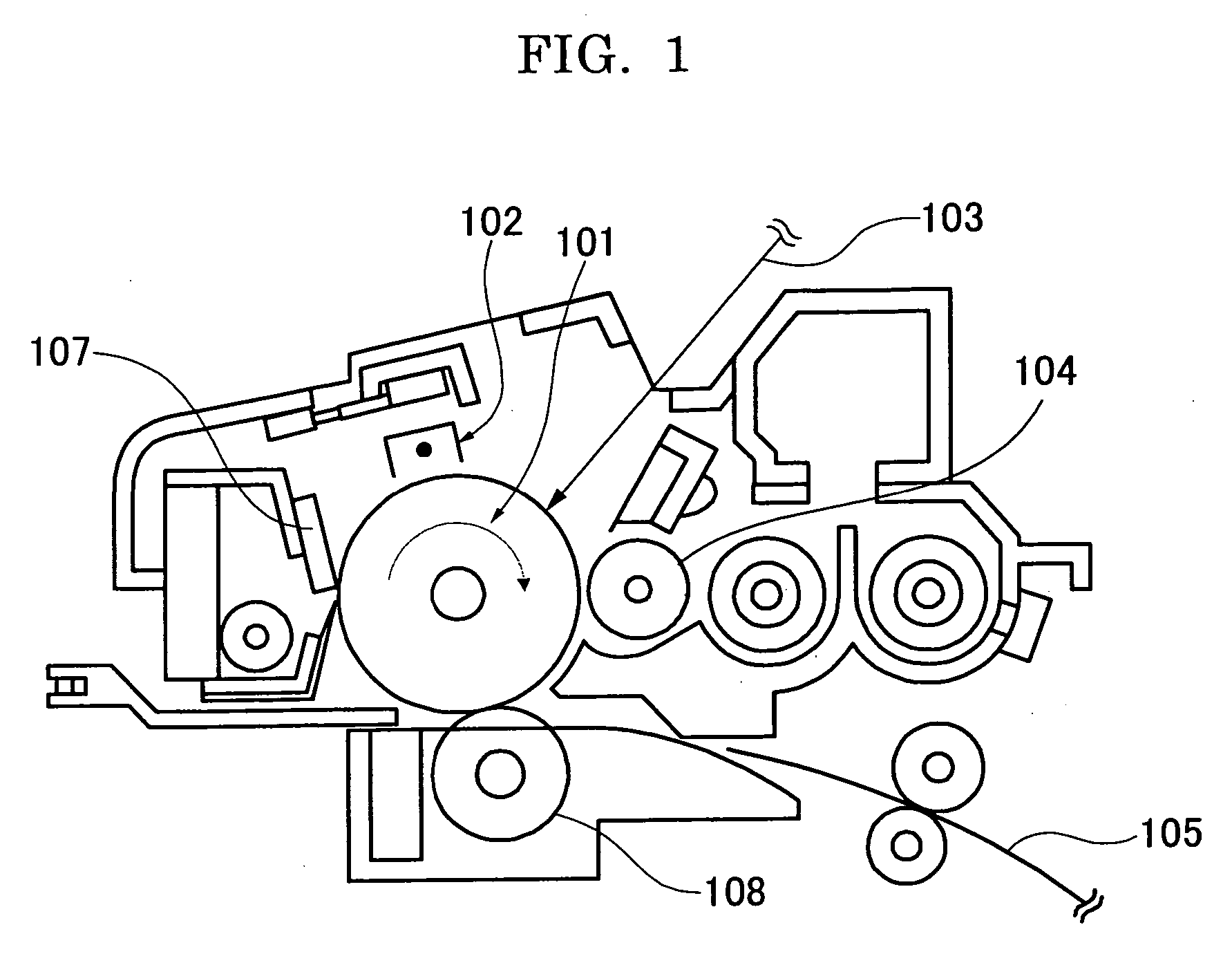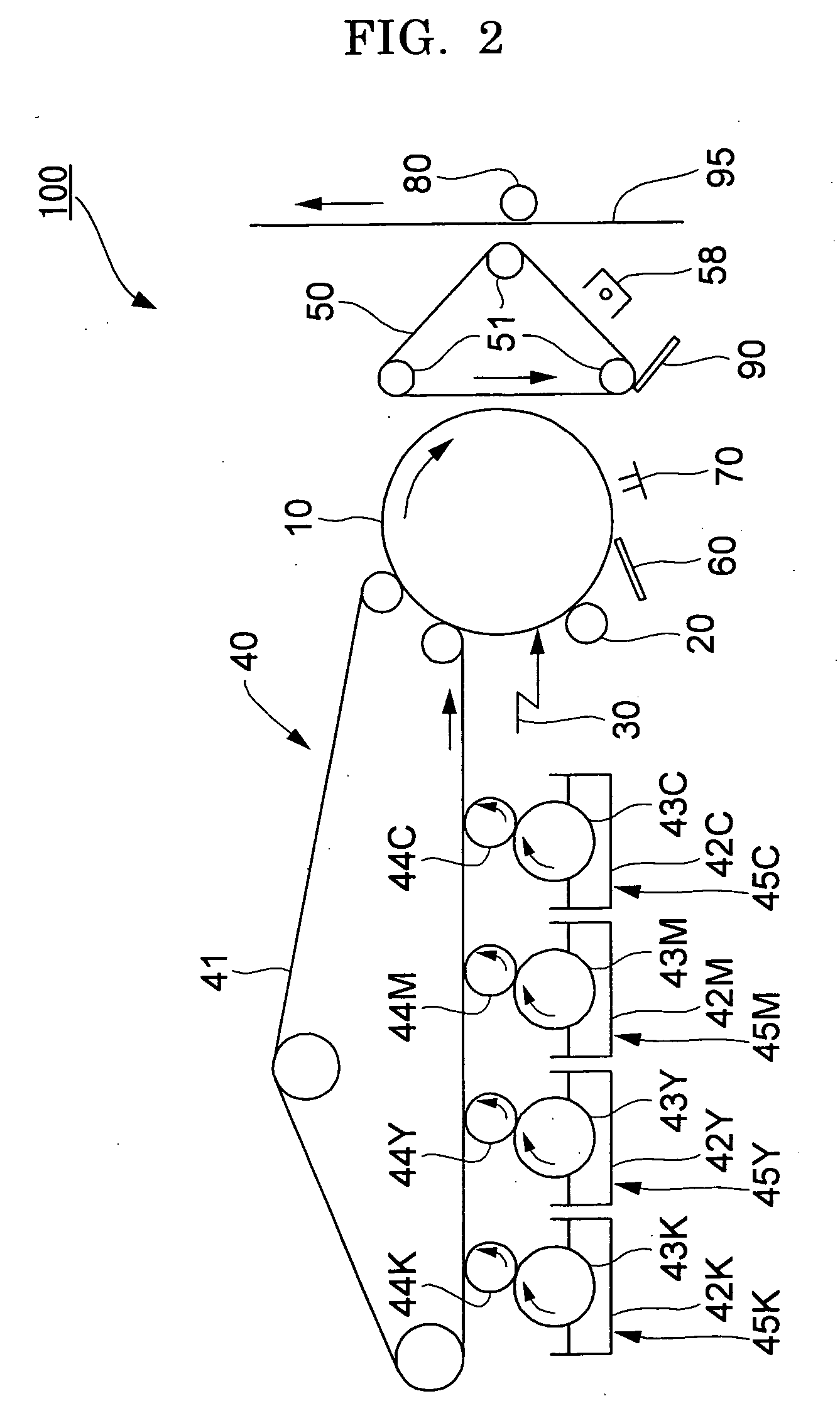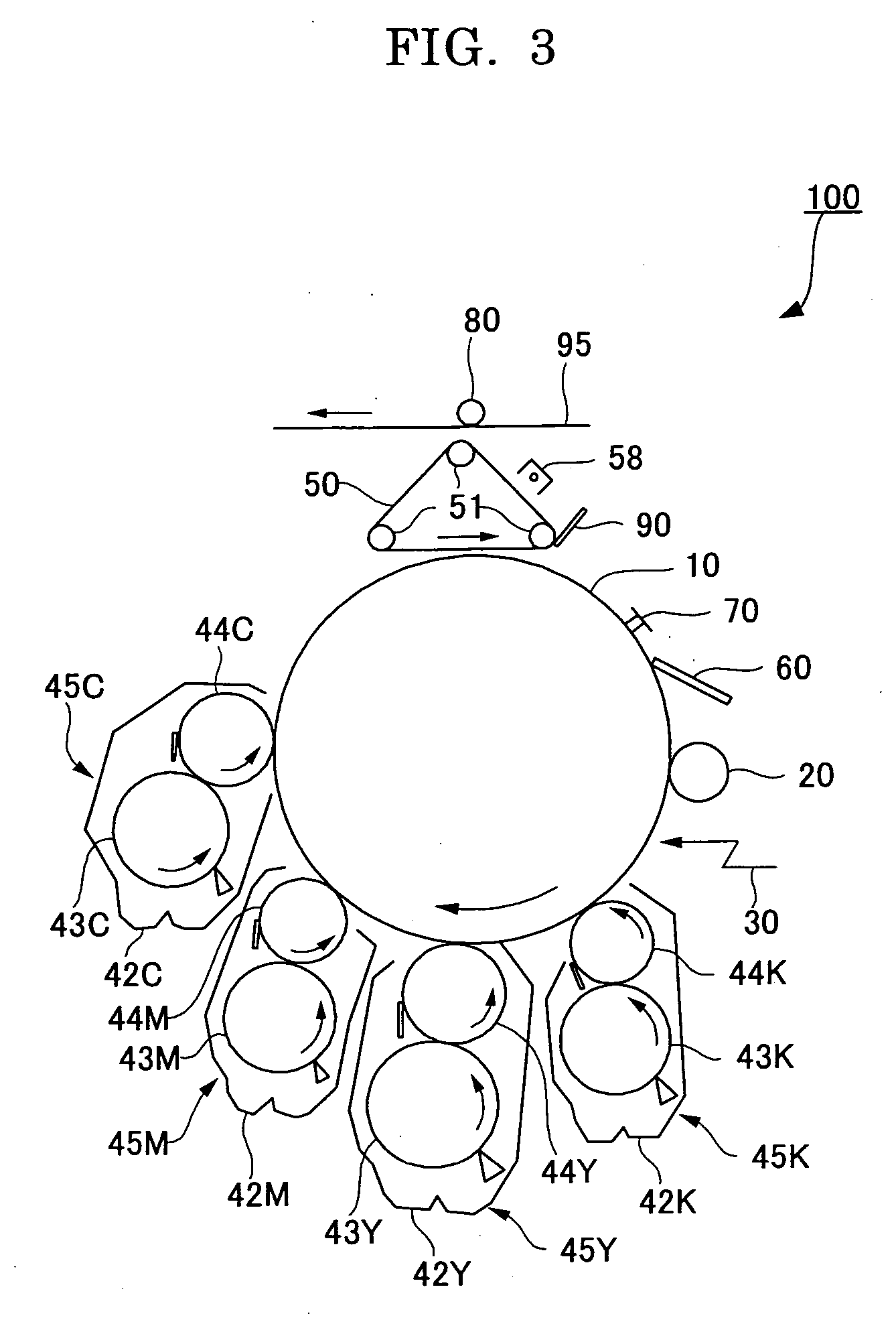Toner, developer, toner container, process cartridge, image forming apparatus and image forming method
a technology of toner container and developer, which is applied in the field of toner container, toner container, process cartridge, image forming apparatus and image forming method, can solve the problems of reducing the yield disadvantageously, limiting the selection of toner materials, and difficult to disperse uniformly colorant and charge controller in thermoplastic resin, etc., to achieve favorable color property and ohp transparency, superior offset property, and high yield
- Summary
- Abstract
- Description
- Claims
- Application Information
AI Technical Summary
Benefits of technology
Problems solved by technology
Method used
Image
Examples
example 1
Synthesis of Resin Particle Emulsion
[0304] In a reaction vessel equipped with a stirrer and a thermometer, 683 parts of water, 11 parts of a sodium salt of methacrylic acid ethylene oxide adduct sulfate ester (ELEMINOL RS-30, manufactured by Sanyo Chemical Industries, Ltd.), 83 parts of styrene, 83 parts of methacrylic acid, 110 parts of butyl acrylate and one part of ammonium persulfate were charged and stirred at 400 rpm for 15 minutes to obtain a white emulsion. The emulsion was heated until the temperature in the system reached 75° C. and reacted for five hours. Furthermore, 30 parts of a 1-% aqueous solution of ammonium persulfate was added, and the mixture was aged at 75° C. for five hours to obtain an aqueous dispersion of a vinyl resin (copolymer of styrene-methacrylic acid-butyl acrylate-sodium salt of sulfate ester of methacrylic acid ethylene oxide adduct), Resin Particle Dispersion 1. The volume average particle diameter of Resin Particle Dispersion 1 was measured by a...
example 2
[0321] Toner 2 was obtained in the same manner as Example 1 except that Master Batch 2 prepared as described below was used instead of Master Batch 1 in Example 1.
[0322] In a 10-liter kneader, 500 parts of crude copper phthalocyanine blue having a purity of 95% was charged along with 2,000 parts of common salt and 550 parts of diethylene glycol. After the mixture was kneaded at 100° C. for four hours, the mixture was added with 25 parts of natural rosin and further mixed for 30 minutes. The mixture obtained was brought out in 10,000 parts of water and agitated at 80° C. until the common salt and diethylene glycol dissolved. After it was further added with 50 parts of 98-% sulfuc acid and agitated for one hour, the mixture was filtered and washed until it became neutral to obtain a pigment composition in a paste form. This was further dried and pulverized to obtain 490 parts of the pigment composition.
Synthesis of Master Batch
[0323] In a Henschel mixer manufac...
example 3
[0324] Toner 3 was obtained in the same manner as Example 1 except that Master Batch 3 prepared as described below was used instead of Master Batch 1 in Example 1.
[0325] After 20.0 parts of 2-amino-5-methylbenzene sulfonic acid was dispersed in 200 parts of water, 22.0 parts of 20-% hydrochloric acid was added. While maintaining the temperature at 0° C., 25.1 parts of a 30-% sodium nitrite solution was delivered by drops to obtain a diazo liquid. Next, 20.6 parts of 2-hydroxynaphthoic acid was dispersed at 60° C. in 242 parts of water, and 11.5 parts of a 48-% sodium hydroxide solution was added to obtain a coupler solution. This coupler solution was cooled to 0° C., and the diazo liquid was delivered by drops into the coupler solution under agitation. After the coupling reaction was completed, the mixture was added with 40 parts of a 10-% solution of sodium salt of rosin and agitated for 60 minutes to obtain a suspension.
[0326] In this suspension, a solution i...
PUM
| Property | Measurement | Unit |
|---|---|---|
| acid value | aaaaa | aaaaa |
| acid value | aaaaa | aaaaa |
| melting point | aaaaa | aaaaa |
Abstract
Description
Claims
Application Information
 Login to View More
Login to View More - R&D
- Intellectual Property
- Life Sciences
- Materials
- Tech Scout
- Unparalleled Data Quality
- Higher Quality Content
- 60% Fewer Hallucinations
Browse by: Latest US Patents, China's latest patents, Technical Efficacy Thesaurus, Application Domain, Technology Topic, Popular Technical Reports.
© 2025 PatSnap. All rights reserved.Legal|Privacy policy|Modern Slavery Act Transparency Statement|Sitemap|About US| Contact US: help@patsnap.com



